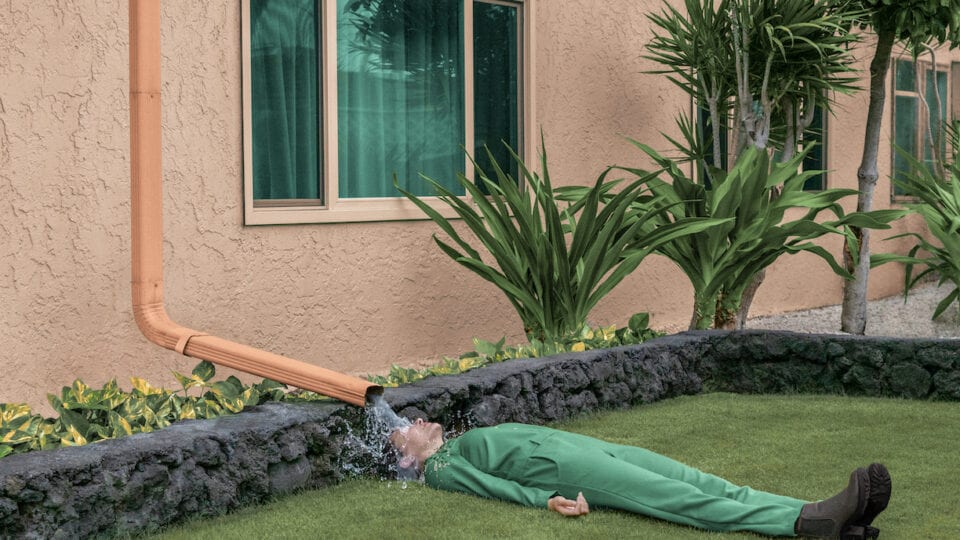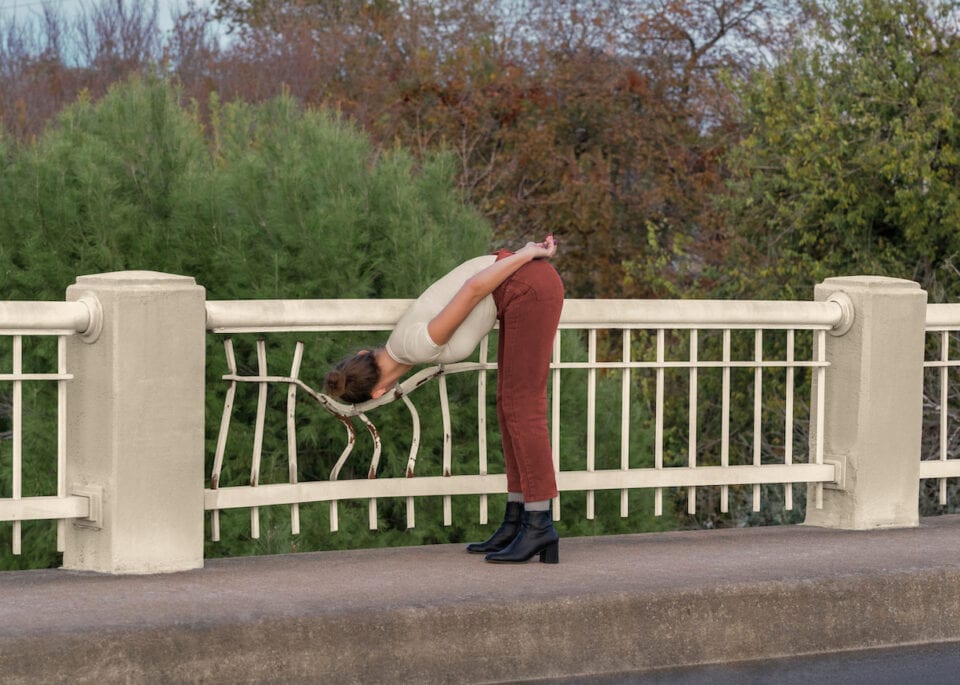The first uses of the word “canny” appear in the 1600s in Irish English and Scottish to describe individuals who are knowing, wise, or wary. By the 1800s, the word took on a new definition in northern England as an intensifier, meaning “very” or “considerably.” By 1906, “uncanny” was first used by German psychiatrist Ernst Jentsch in On the Psychology of the Uncanny. The word was referred to in its native German as “unheimlich” (unhomely) pertaining to concepts outside of our understanding or beyond our wider awareness. In 1919, the term was adopted by Sigmund Freud to describe concepts that are both familiar and alien simultaneously. “Unhomely” began to refer to something deep within us – unknown, hidden or repressed emotions. Brooke DiDonato’s work sits within a contemporary reading of The Uncanny in photography: images which are at once unsettling and alluring, set within familiar domestic locations.
Images:
1. Brooke DiDonato, Wake Up Call, 2020. Courtesy of the artist.
2. Brooke DiDonato, Untitled, 2018. Courtesy of the artist.
3. Brooke DiDonato, Half and Half, 2016. Courtesy of the artist.
4. Brooke DiDonato, Untitled, 2018. Courtesy of the artist.
5. Brooke DiDonato, The Weight of a Heavy Mind, 2019. Courtesy of the artist.
6. Brooke DiDonato, Everything but the Kitchen Sink, 2020. Courtesy of the artist.
7. Brooke DiDonato, Act Two, 2020. Courtesy of the artist.











